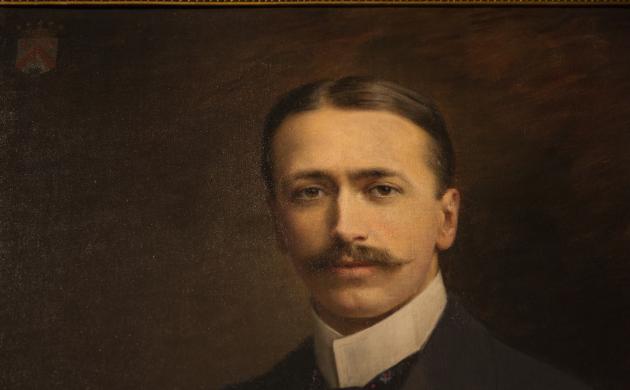Wealthy parents
1857. Emil Mayer (1824-1879) marries Henriëtte van den Bergh (1838-1920). He comes from the German city of Cologne and runs a branch of the family business in Antwerp, trading in spices and pharmaceutical products. Emil Mayer is a well-known and highly successful businessman in Antwerp. Henriëtte van den Bergh is the daughter of Jan van den Bergh, a businessman, alderman and senator from Antwerp. She too is very wealthy. Fritz Mayer van den Bergh’s ability to buy so much art is of course partly explained by the rich family he is born into.
1879: a turning point
Emil Mayer and Henriëtte van den Bergh have two sons, Fritz and Oscar. Oscar (1859-1913) will carry on the family business. In 1879, the father, Emil, dies. By this time, Fritz is 21 years old and studying at Ghent University (literature and philosophy, and law). A career in diplomacy or business awaits him, but he breaks off his studies and goes to live with his mother. The bond between them is tight. When Fritz Mayer is elevated to the nobility in 1888, he has her surname added to his, becoming ‘Fritz Mayer van den Bergh’.
The 1880s: passionate collecting
During the 1880s, Fritz Mayer dedicates himself to his great passion: collecting art, both in Belgium and abroad. He is self-taught, and buys an enormous variety of items, including everyday objects. This is common practice among collectors of ‘antiquities’ at this time, but Fritz Mayer soon also becomes an expert in textiles and old coins. Important numismatic societies offer him membership.
1892: a new turning point
In 1892, Fritz Mayer van den Bergh brings a period of activity to a close by selling most of his collection. The auction catalogues are kept in the museum archive, and give us a good idea of his first collection period. By now, Fritz Mayer van den Bergh is closely acquainted with the art market. He has also developed an extensive network.
From 1892: intense buying
From 1892, Fritz Mayer van den Bergh mainly focuses as a collector on painting and sculpture. However, silverware, glassware, porcelain and other disciplines are also of interest to him. He has a preference (and a nose) for ‘forgotten’ artists.
What he buys, he also studies. He regards it as a challenge to attribute anonymous works to a specific artist. He travels frequently, including to Italy, and visits many auctions in places such as Paris, London or Cologne.
1898: an important moment
In 1898, Marie Micheli, daughter of the recently deceased collector Carlo Micheli, puts her father’s collection on sale in Paris. It contains 451 works of art, mainly smaller medieval statuettes. Museums and other collectors tend to ignore art of this kind during this period, although interest is growing – as are prices.
Fritz Mayer van den Bergh beats the major museums to the purchase of Micheli’s collection: he buys everything, spending all his capital to do so and even taking out a loan. The crates that pass through customs are marked ‘Sans valeur artistique’ – without artistic value... Later on, Mayer will sell about 300 objects.
1898-1901: final culminating point
During the last three years of his life, Fritz Mayer van den Bergh buys works that today are the most important (and in many cases the most valuable) in the museum. All his qualities come together during this period: audacity, networking, knowledge, financial realism and, of course, the necessary means. His fame has spread.
On 4 May 1901, however, his success comes to an abrupt end: after a riding accident and several months of illness, Fritz Mayer van den Bergh dies. He is just 43 years old and has long had the ambition of setting up his own museum. His mother will make this dream come true three years later.



